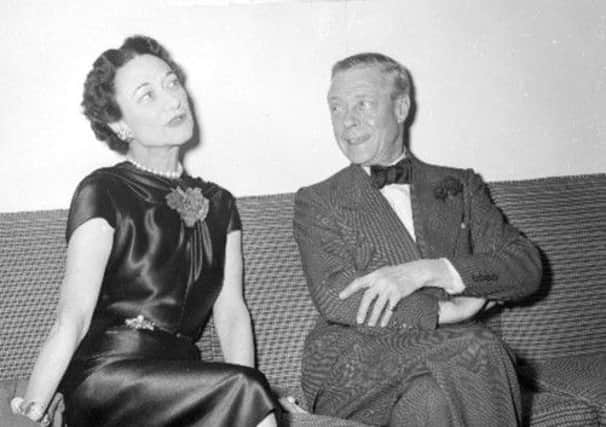King Edward VIII calls bugged by ministers


Papers held secret in the Cabinet Office for more than seven decades show that home secretary Sir John Simon instructed the General Post Office (GPO) to covertly monitor the king’s telephone calls.
The action suggest an extraordinary breakdown of trust between King Edward and his ministers as he wrestled with his decision as to whether he should give up his throne or the woman he loved.
Advertisement
Hide AdAdvertisement
Hide AdIn December 1936, the crisis was coming to a head. The previous month the new king, who had not yet been crowned, informed prime minister Stanley Baldwin that he intended to marry his mistress, American divorcee Wallis Simpson.
At a time when the Church of England refused to remarry divorcees while their former spouse was still living, Baldwin was adamant that such a match was impossible if Edward was to remain on the throne.
After months of silence, the story had finally broken in the press – prompted by a sermon by the Bishop of Bradford on the king’s duties as head of the Church of England.
At first, it appeared that King Edward believed that he could defy his ministers and ride out the crisis on a wave of popular support. There were suggestions he could go ahead with the marriage to Mrs Simpson, forcing Baldwin to resign, and then appoint a new “royalist” government headed by Winston Churchill.
It was against this backdrop – with King Edward holed up at his residence at Fort Belvedere, in Windsor Great Park, and Mrs Simpson in the south of France where she had taken refuge with friends – that Sir John instructed the GPO to start intercepting his calls.
The files released by the National Archives in Kew, London, include the draft of a note – dated 5 December, 1936, and marked “Most Secret” – sent from the Home Office to the head of the GPO, Sir Thomas Gardiner, confirming Sir John’s order.
It stated: “The home secretary asks me to confirm the information conveyed to you orally, that you will arrange for the interception of telephone communications between Fort Belvedere and Buckingham Palace on the one hand and the continent of Europe on the other.”
The file does not contain any record of the intercepted calls or any other details of the monitoring operation. Five days later, on 10 December, King Edward finally accepted that he could not prevail and he signed the instruments of abdication. His reign had lasted 326 days.
Advertisement
Hide AdAdvertisement
Hide AdThe files show just how sensitive ministers were during those December days.
On 6 December, a Home Office official reported that he was rung at home at 11pm by a GPO clerk to report two telegrams sent by a South African journalist claiming the king had already resigned.
On Home Office instructions, the telegrams were blocked and the journalist, Neil Forbes, the London editor of the Cape Times, summoned for a dressing down by the home secretary.
Sir John told Forbes there was “no truth” in his report.